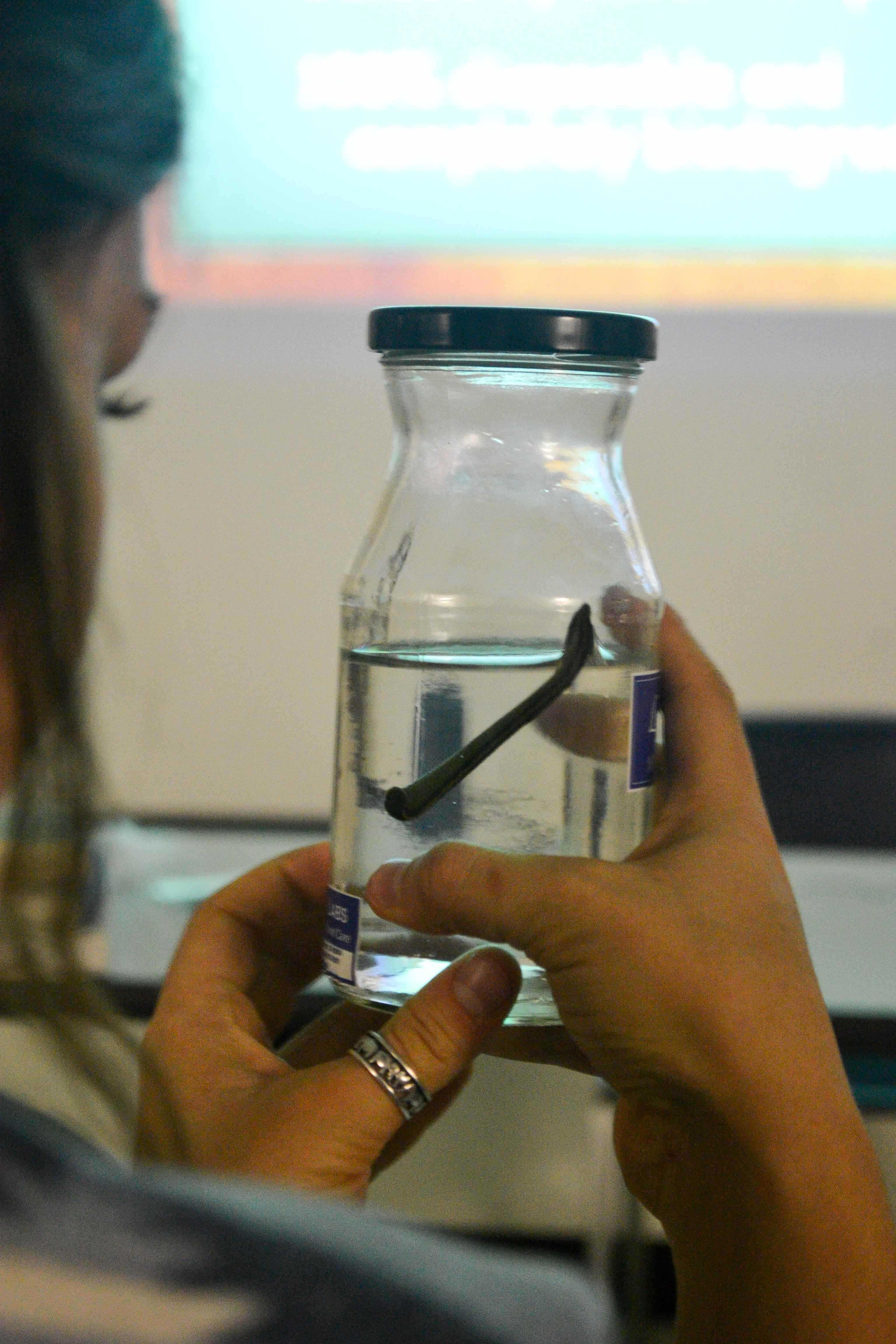Despite the technological advancements in today’s medical field, some are looking toward a centuries-old practice to treat infection: maggot therapy.
Ronald Sherman, a former University of California, Irvine professor, gave a presentation to a medical anthropology class at Cal State Long Beach yesterday on multiple types of biotherapy, a form of medical practice that he said uses live organisms to treat disease.
In his presentation, he detailed the medical uses of maggots, leeches, bee venom and fish.
Maggot therapy, also known as Maggot Debridement Therapy (MDT), calls for maggots to be placed on the flesh of an infected wound, which the maggots begin to dissolve and consume.
“That naturally occurring infestation is called myiasis, and maggot therapy is just a therapeutic control of myiasis,” Sherman said.
He said that maggots thrive off of gangrenous flesh and secrete an anti-microbial chemical that can disinfect and accelerate healing when placed on seriously infected wounds, such as rotting foot ulcers in patients with severe cases of diabetes.
Although the procedure has been used for centuries, Sherman said surgical advancements made during World War II and the development of antibiotics led to its falling out favor in the 1940s.
It took until the 1990s for MDT to see its first clinical trials. In situations where many doctors opt for amputation, Sherman said he has seen promising results after just a couple MDT sessions.
According to Sherman, people scheduled for amputations often get maggot therapy as a last resort. Of those, he claimed, 50 percent heal and avoid amputation.
Sherman said that 100,000 amputations occur in the U.S. each year and that maggots from the U.K could soon help Americans.
“The largest commercial laboratory producing maggots is in the U.K. They distribute 20,000 a year,” he said. “They have plans to come to the U.S. because this is where the big need is.”
In 2003, the FDA began regulating the use of maggots for clinical purposes. However, multiple other forms of biotherapy are not FDA approved, such as leech therapy and apitherapy, the use of bee venom to lessen pain from multiple ailments.
Sherman said leech therapy, which takes advantage of local anesthetics and anticoagulants that leeches release, may be the oldest form of biotherapy.
Leeches were, and still are, used in limb-replacement surgeries to drain old blood to make way for new, oxygenated blood from a healthy limb, Sherman said.
“When the leech bites, it does feel like a pin,” he said.
While the public is familiar with seeing-eye and alert dogs as forms of biotherapy, Sherman said most people, as well as the FDA, are irked by treatments such as ichthyotherapy, which uses fish to eat infectious growths on a patient’s feet.
Ichthyotherapy as well as leech therapy have a potential risk for disease transmission because blood from diseased patients can easily be passed onto others that are nibbled by the same fish or sucked by the same leech.
While skeptics may scoff at the efficacy of such therapies, he said that the therapy is still popular overseas.
Bacteria is gradually becoming resistant to antibiotics and the medical field is changing, but Sherman said he sees a window for the re-emergence of these multiple biotherapies.




